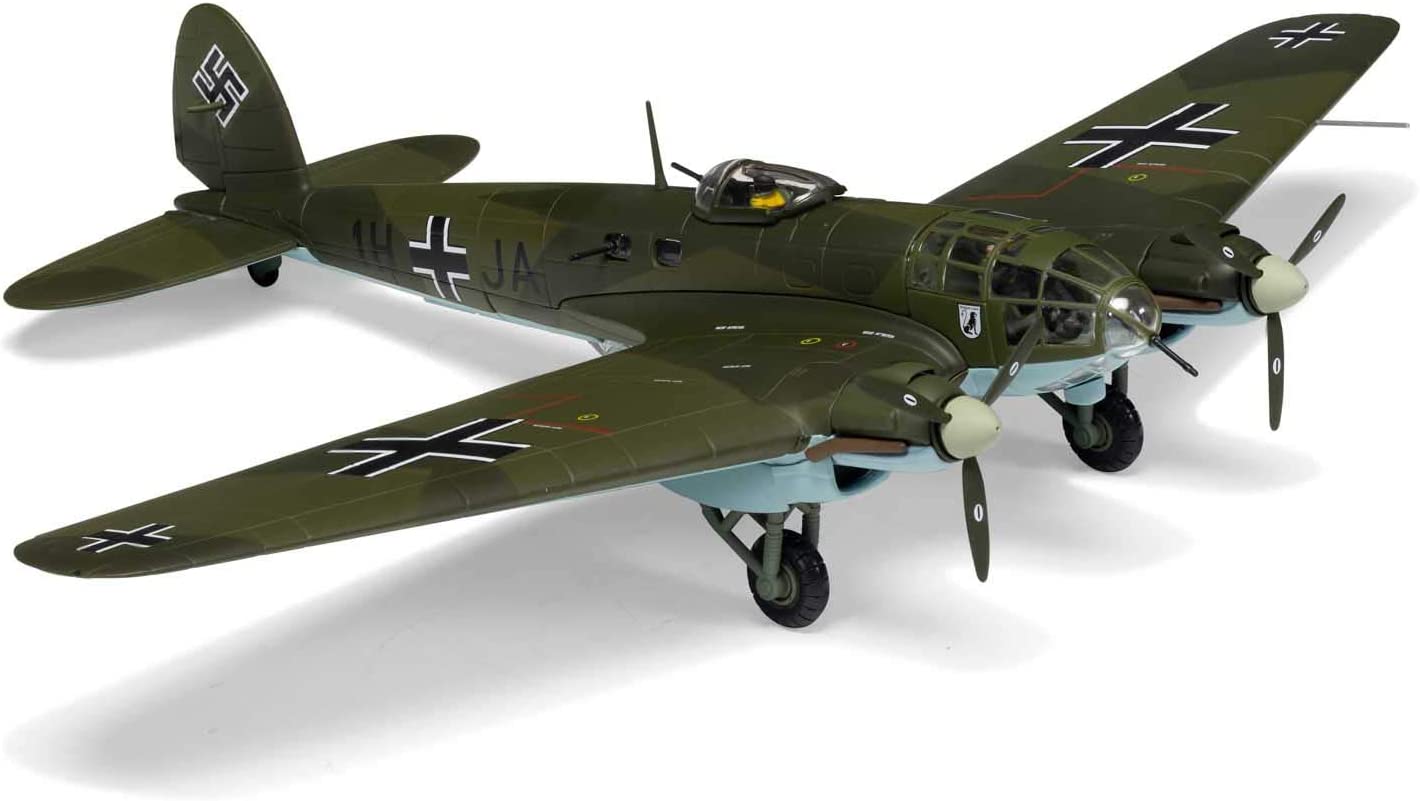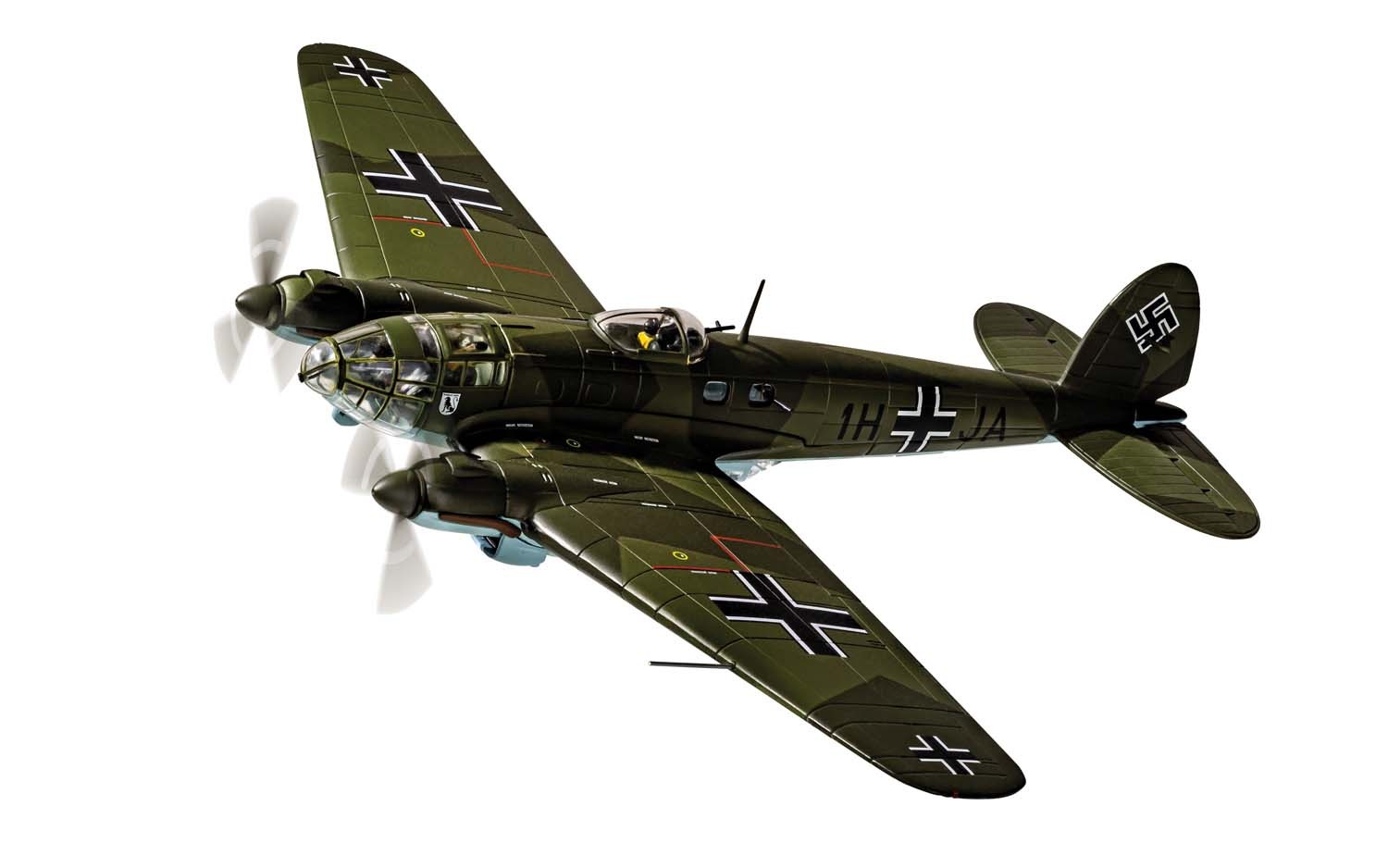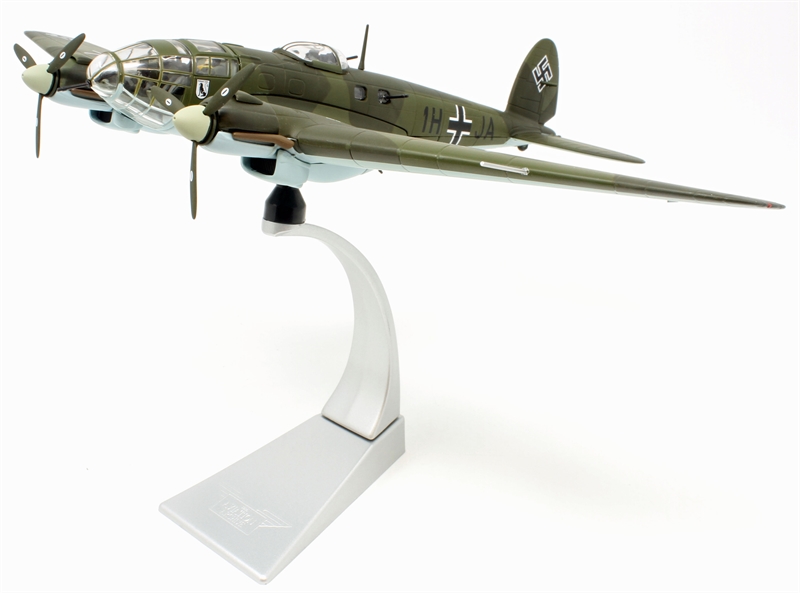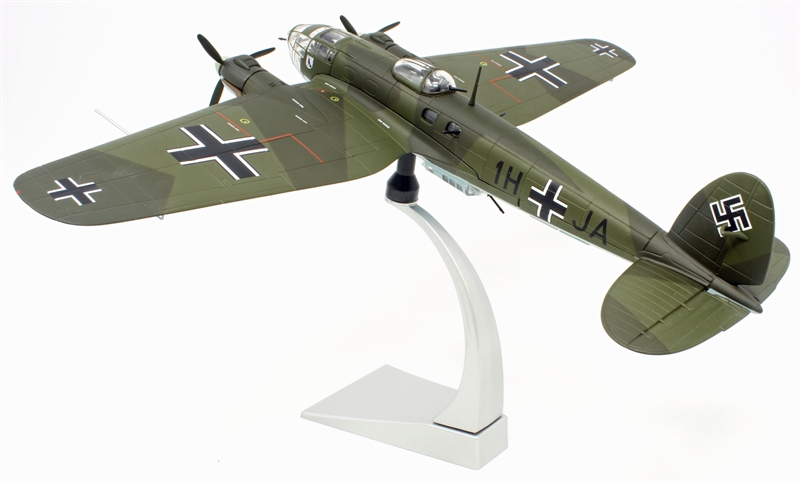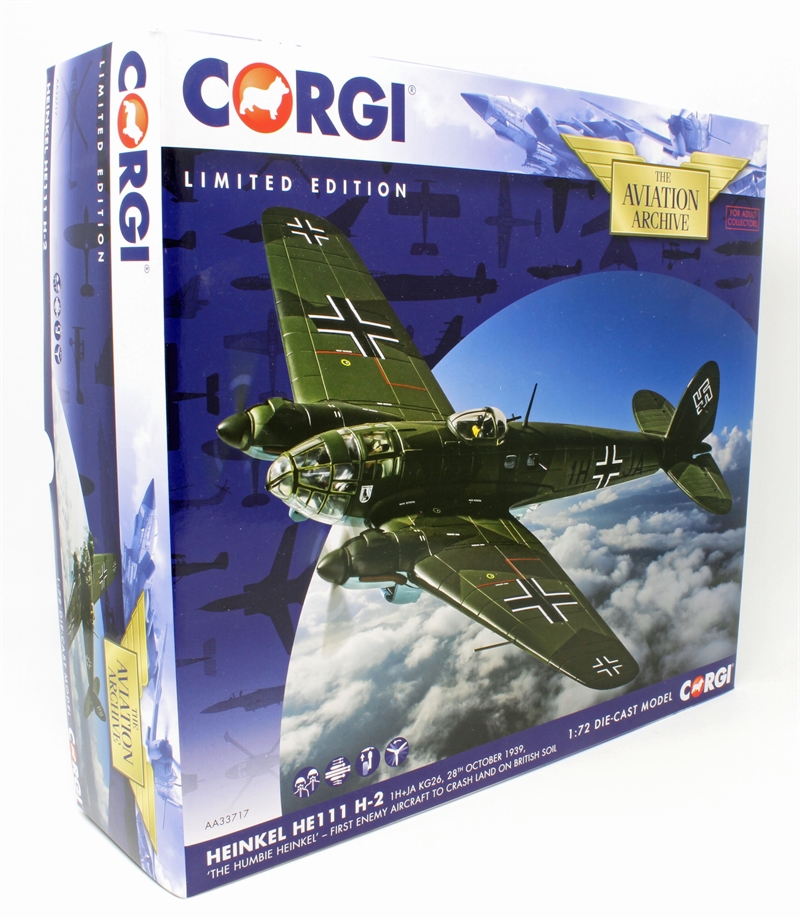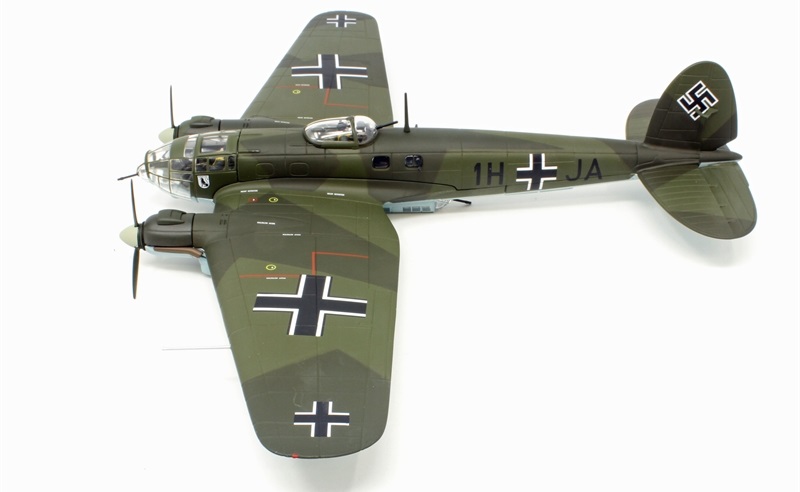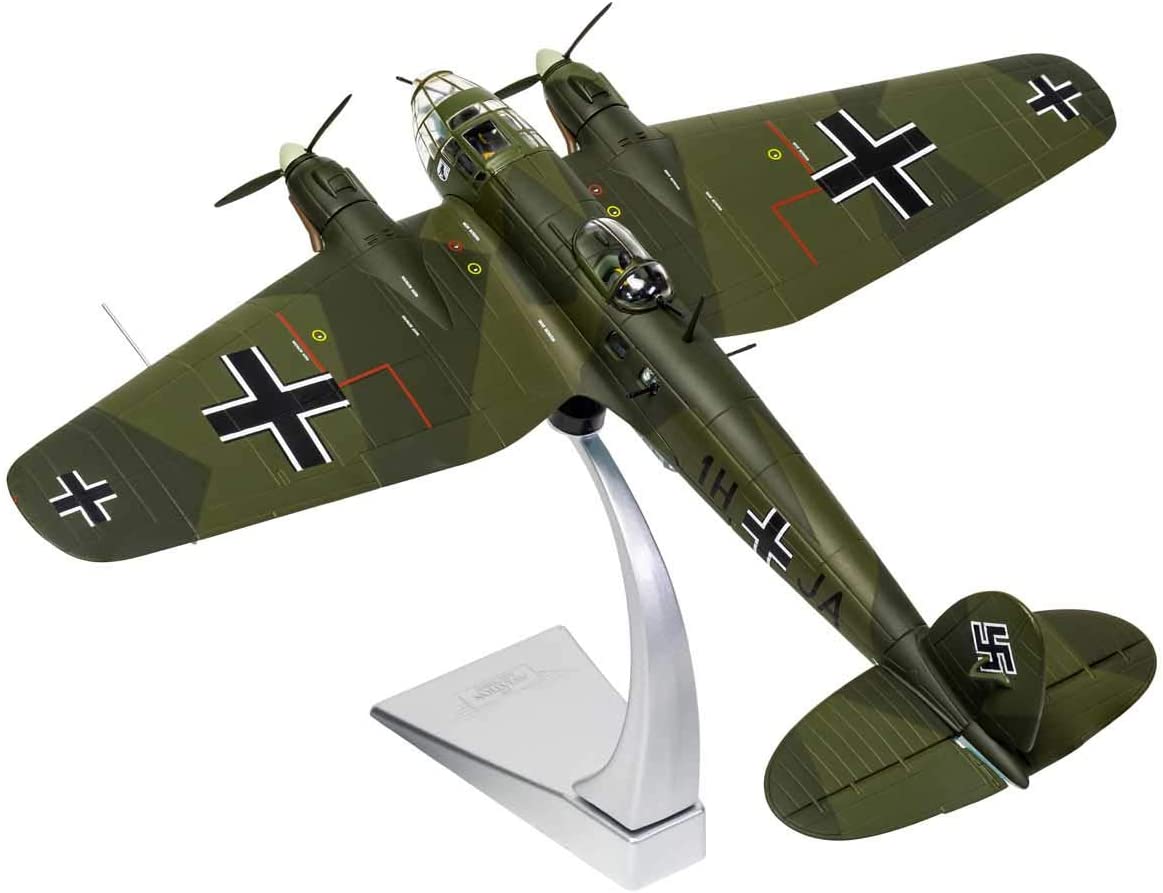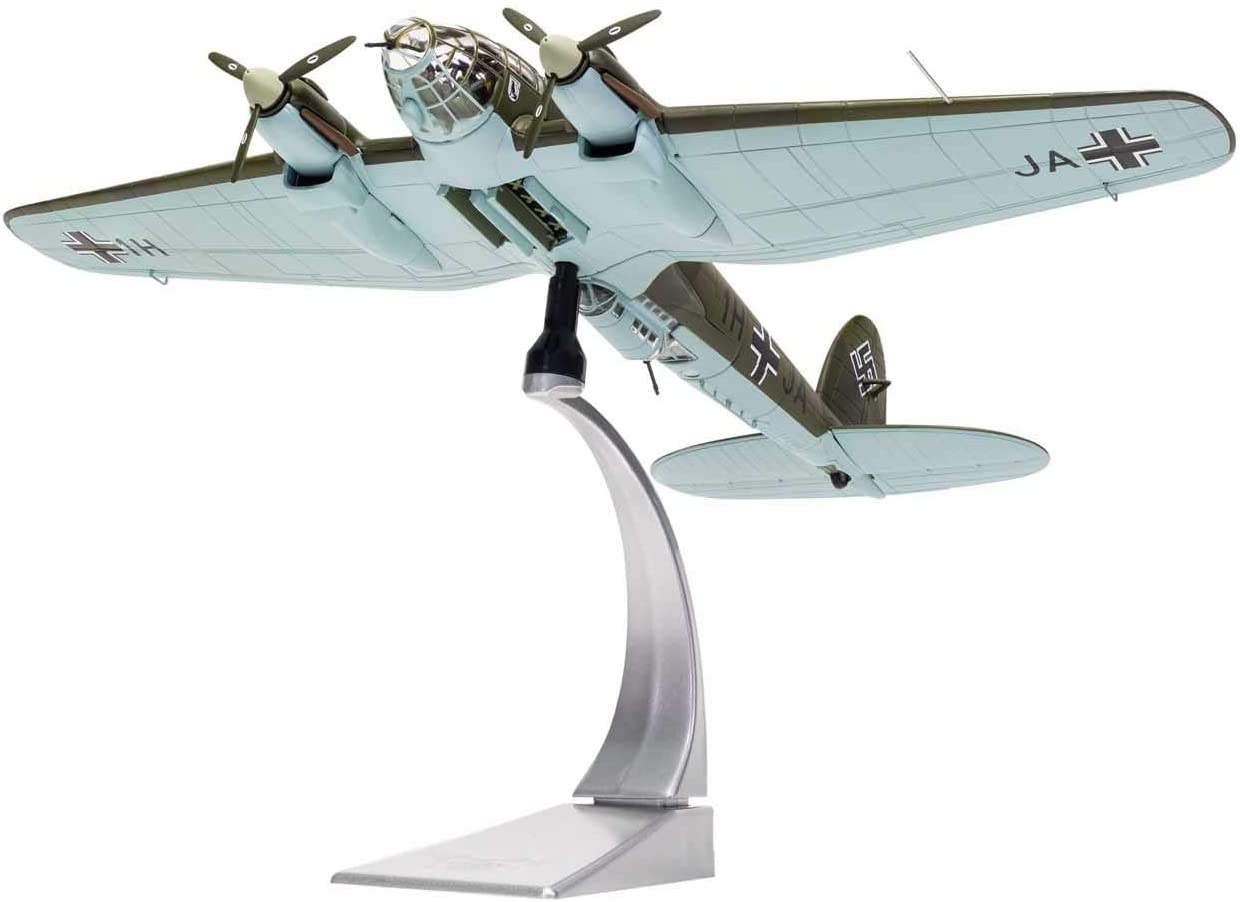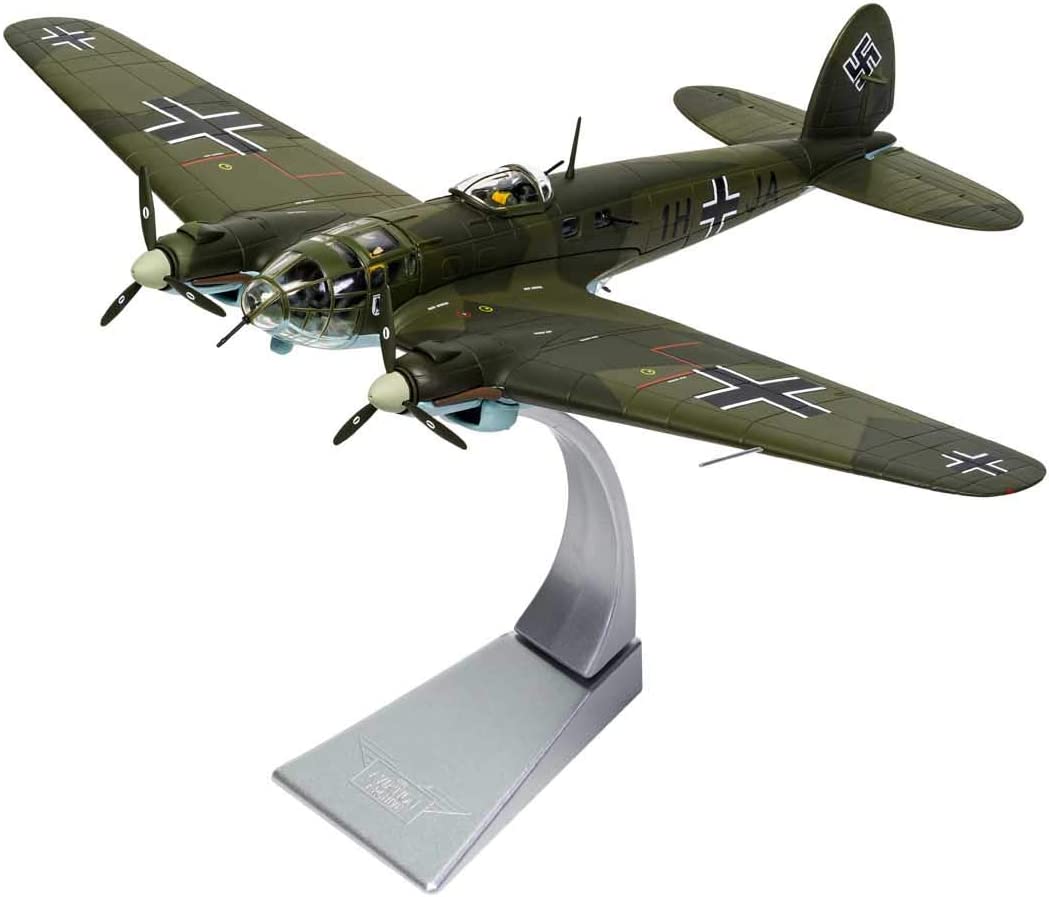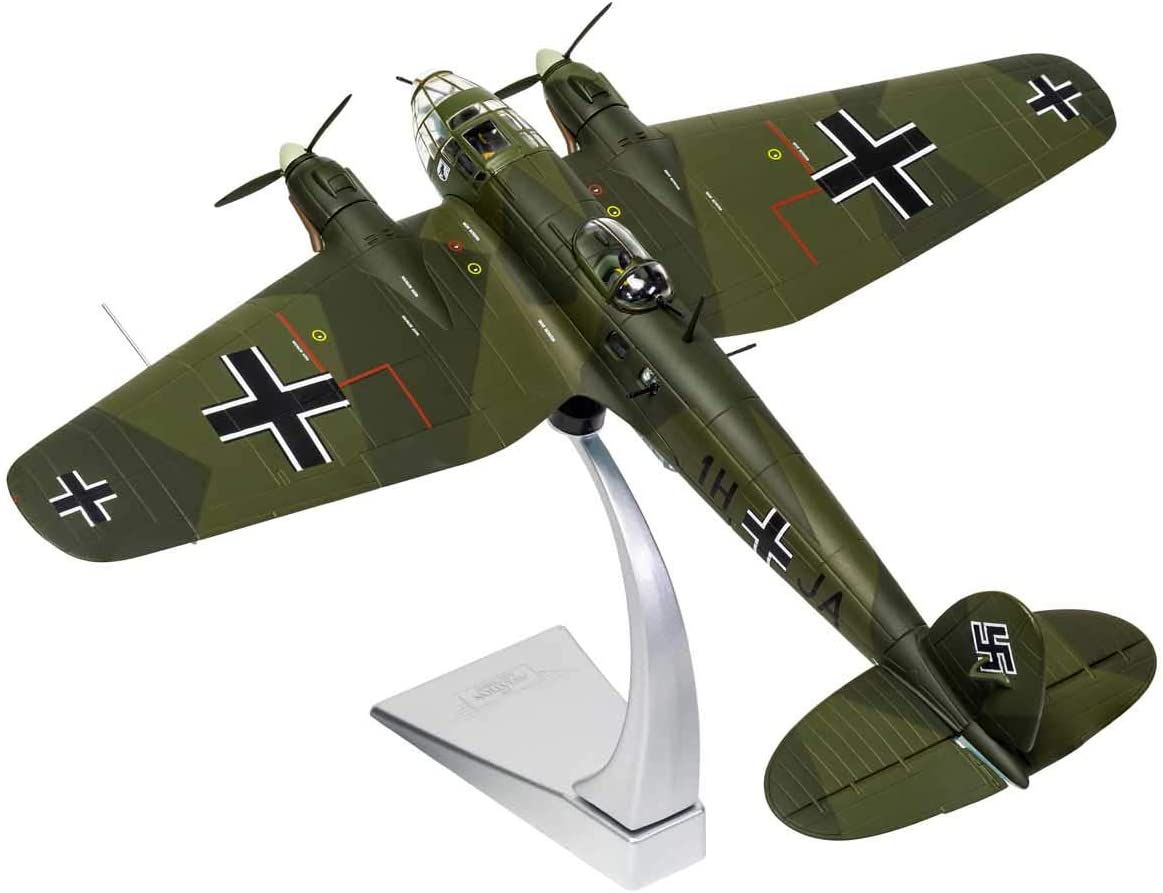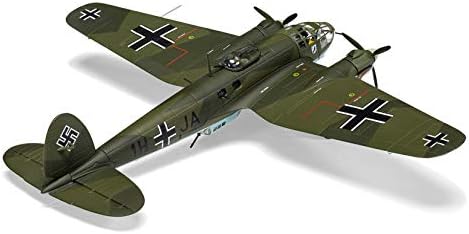Heinkel He 111H-2 – Stab./KG26, Luftwaffe (Crash landed Humbie, Scotland 1939)
Add to compare1 in stock
£144.99
1 in stock
Corgi Aviation 1/72 scale AA33717: Heinkel He 111H-2 serial 1H+JA of Stab./KG26, Luftwaffe, crash landed Humbie, Scotland, October 28th 1939. Limited Edition of 1,000 models.
Length 9 inches Wingspan 12.25 inches
As the four man crew of KG26 Heinkel 1H+JA boarded their aircraft at Westerland airfield on the Island of Sylt on the morning of 20th October 1939, they knew that a long and dangerous sortie lay ahead of them. Their task was to perform a long range armed reconnaissance flight over the Glasgow area and on to photograph gun emplacements and naval vessels in the Firth of Forth, a heavily defended area of Britain. During the sortie, improving weather conditions over Scotland made the Heinkel clearly visible from the ground and as well as coming under fire from anti-aircraft batteries, patrolling Spitfires from Nos 602 and 603 Squadrons were quickly on the scene. Attacking the aircraft from the rear, the Spitfires quickly silenced the intruder’s defensive fire, before mounting repeated attacks, peppering the Heinkel’s wings and fuselage with .303 machine gun bullets. With the pilot sustaining injury and both of the aircraft’s engines damaged, the Heinkel rapidly lost height, with a crash landing the only option available to the two surviving crew members. Striking moorland near the village of Humbie in East Lothian, the aircraft demolished a drystone wall before coming to rest on a slight incline, breaking the Heinkel’s back in the process. The aircraft had the notoriety of being the first German aircraft to crash relatively intact on British soil during WWII.
Designed in direct violation of the Treaty of Versailles, the Heinkel He 111 first flew on February 24, 1935. Masquerading as a transport aircraft, the He 111 was actually a fast medium bomber that went on to become the most prolific Luftwaffe bomber used during the early part of WWII. During its early service career, the He 111 had the distinction of being one of the fastest aircraft in the world, with speeds exceeding 250 mph. It was also versatile, serving as a medium bomber, strategic bomber and as a torpedo bomber. By late 1944 the Luftwaffe halted bomber production, and the He 111 became a transport aircraft.
| Weight | 1.9 kg |
|---|

